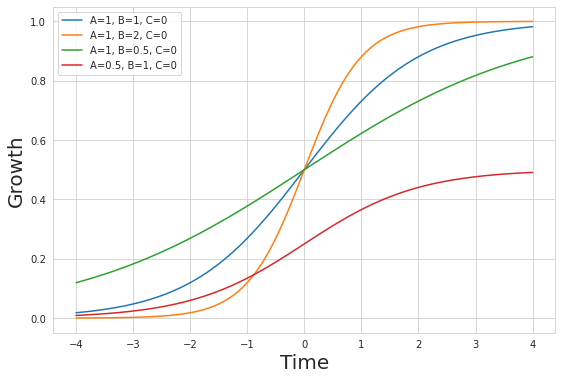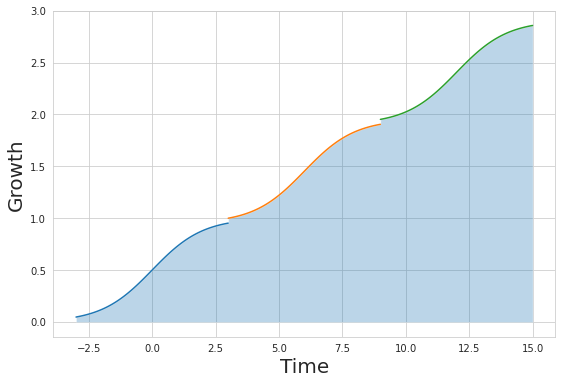On Growth Trajectories
There are many ways to think about growth in various aspects of one's life. A useful mental model is that of a Sigmoid curve.
$$\text{growth} = \frac{A}{1+\exp(-B t + C)}$$
$B$ will determine how steep your progress is, $C$ will determine when that steep progression happens and $A$ determines the level at which saturation happens. All the above parameters are functions of your trajectory.
What is growth?
Growth here is a very generic idea that refers to an increase in the amount of something that is of value to you. It can be income, skill level in a particular craft, corporate rank or even how mature you are in life. Regardless as stated in Vaclav Smil's Growth - From microorganisms to megacities, many growth phenomena follow similar trajectories.
Basic Growth Curve
In all cases, there are two key descriptors of the growth curve. Rate of progress, $B$, and saturation point, $A$. Both descriptors can have high or low values. $C$ determines when will the steepest growth will occur which I will assume to be constant for now.

The figure above shows how $A$ and $B$, affect the Sigmoid curve. The blue line is a normal Sigmoid curve. If we increase $B$, then we make the climb around 0 steeper (orange curve), and vice versa (see green curve). But in both cases, the curve will eventually saturate at the same level of growth. An intuitive way to understand this is that different people achieve their maximum capacity, given by $A$, over different lengths of time. If we decrease $A$, the curve settles at a lower point (red curve). From this we can also tell that $A$ represents the maximum potential (I.e. maximum salary or skill level).
Thus there are 4 curve types:
- High rate, low saturation
- High rate, high saturation
- Low rate, low saturation
- Low rate, high saturation
Of course, high rate-high saturation is desirable. But very few are like that as this means that the person grows rapidly for a long time reaching a very high level.
Low rate-low saturation is definitely where you don't want to be.
High rate-low saturation gives temporary rewards but allows one to progress no further. This is the typical case when one progresses too fast and is stuck in a role that he cannot get out of easily.
Low rate-high saturation is where most people who want to achieve things will be. This is similar to what is expressed in Range: How generalists triumph in a specialised world where initial learning is haphazard and doesn't show results until later. Of course one has to gauge the amount of time it will take. If it is likely to take several lifetimes to achieve maximum then one probably has to look for some ways to speed the learning up.
Nonetheless, it seems to me much more profitable to focus more on increasing $A$. This is because when the period of steep growth kicks in, you will quickly grow to a point you never thought possible if your maximum capacity is high.
Growth spurts

Of course, growth does not happen once and for all. Often it comes in spurts. There may be times when one feels like he is stagnating only to find something that would trigger another phase of growth. The truth is, you would never know when or how the next phase of growth will occur. The only way to improve your chances is to continually expose yourself to different ways of thinking and areas of potential interest.